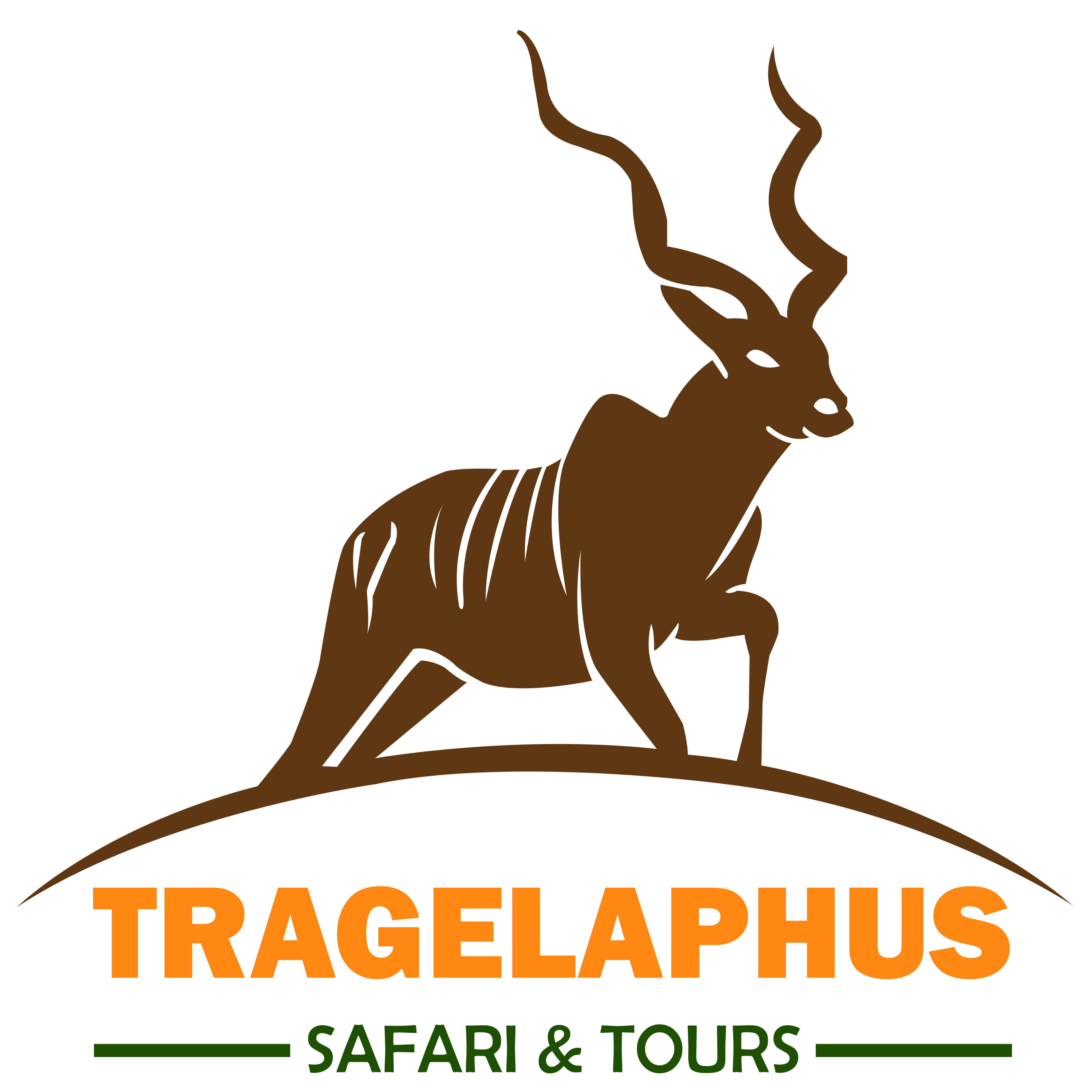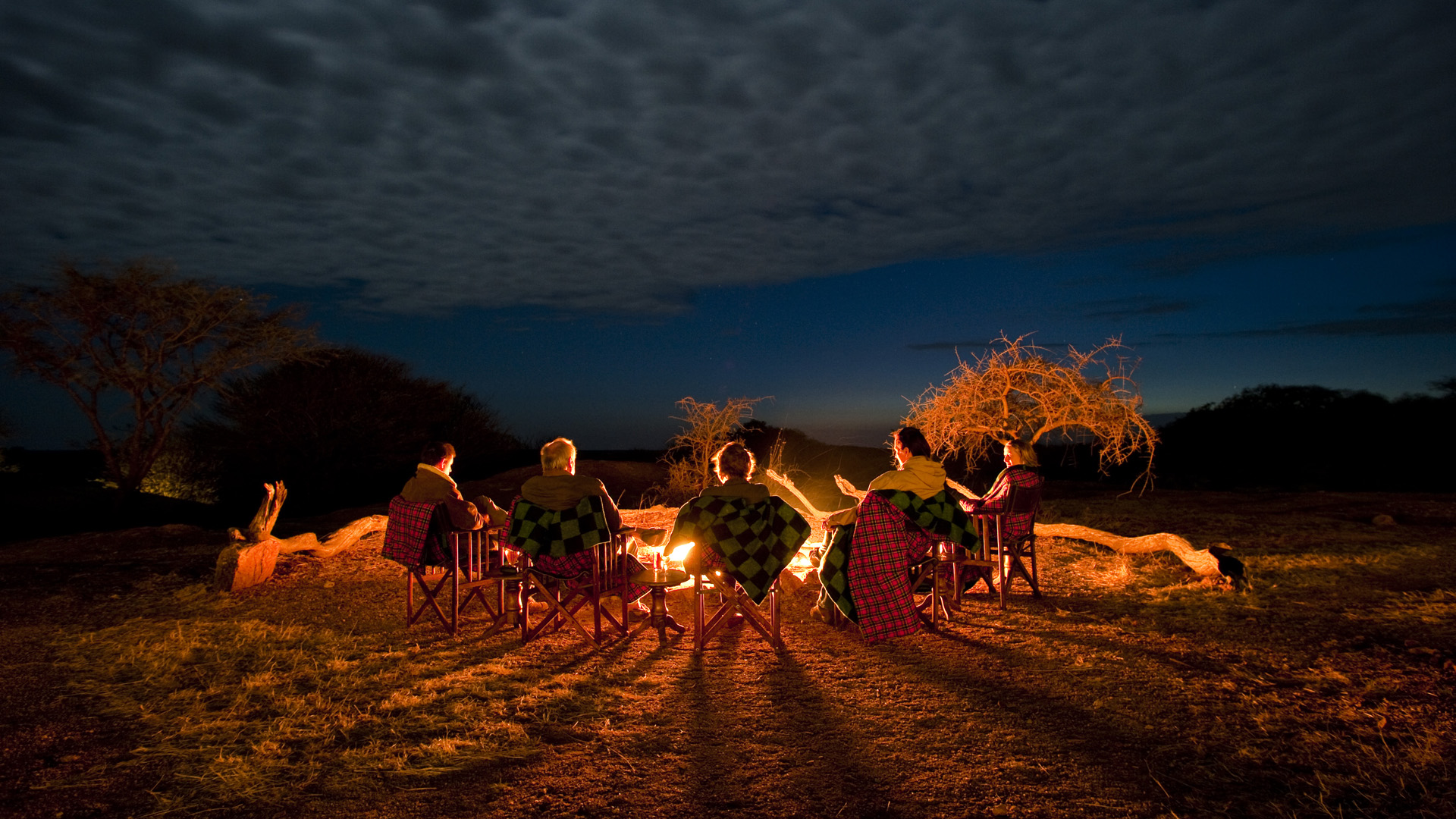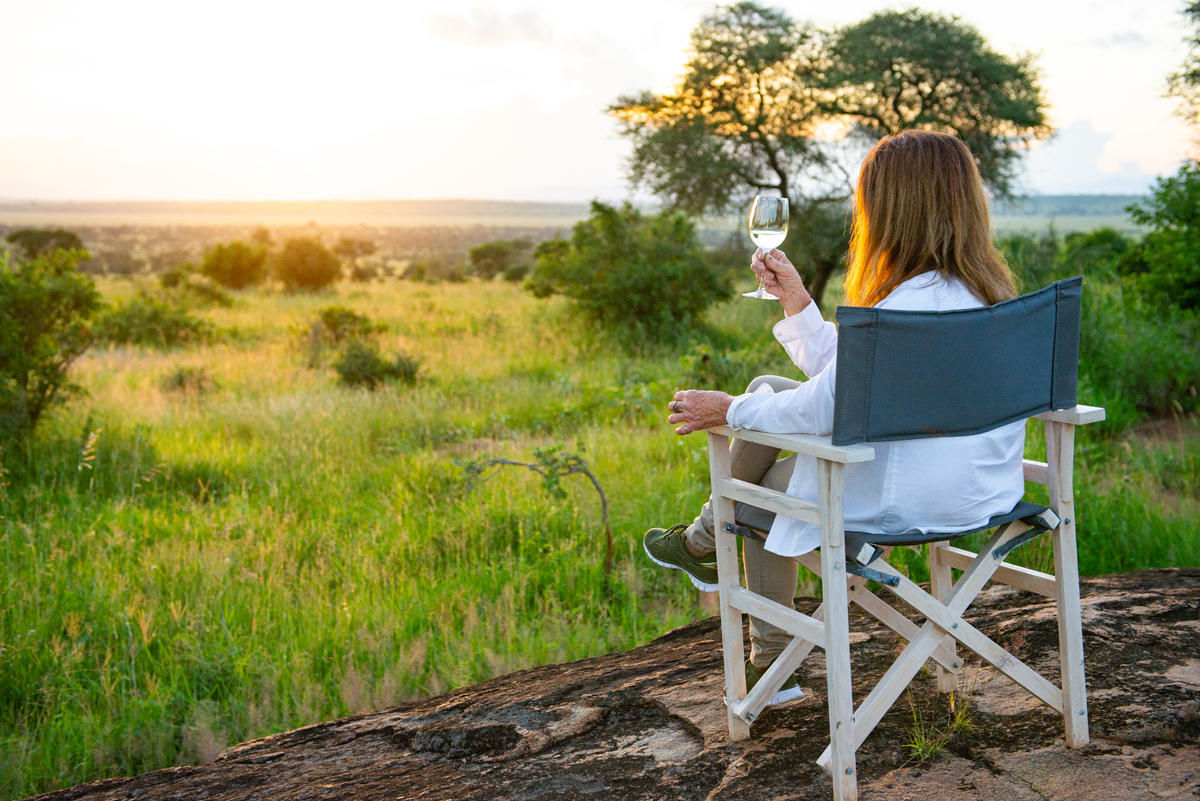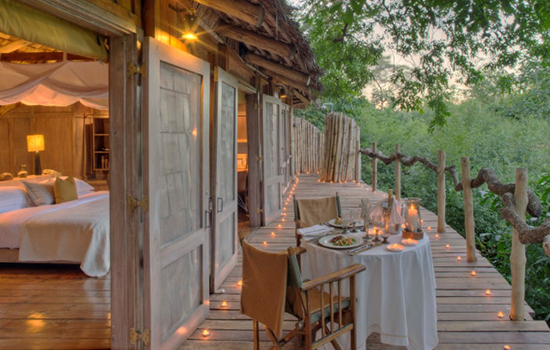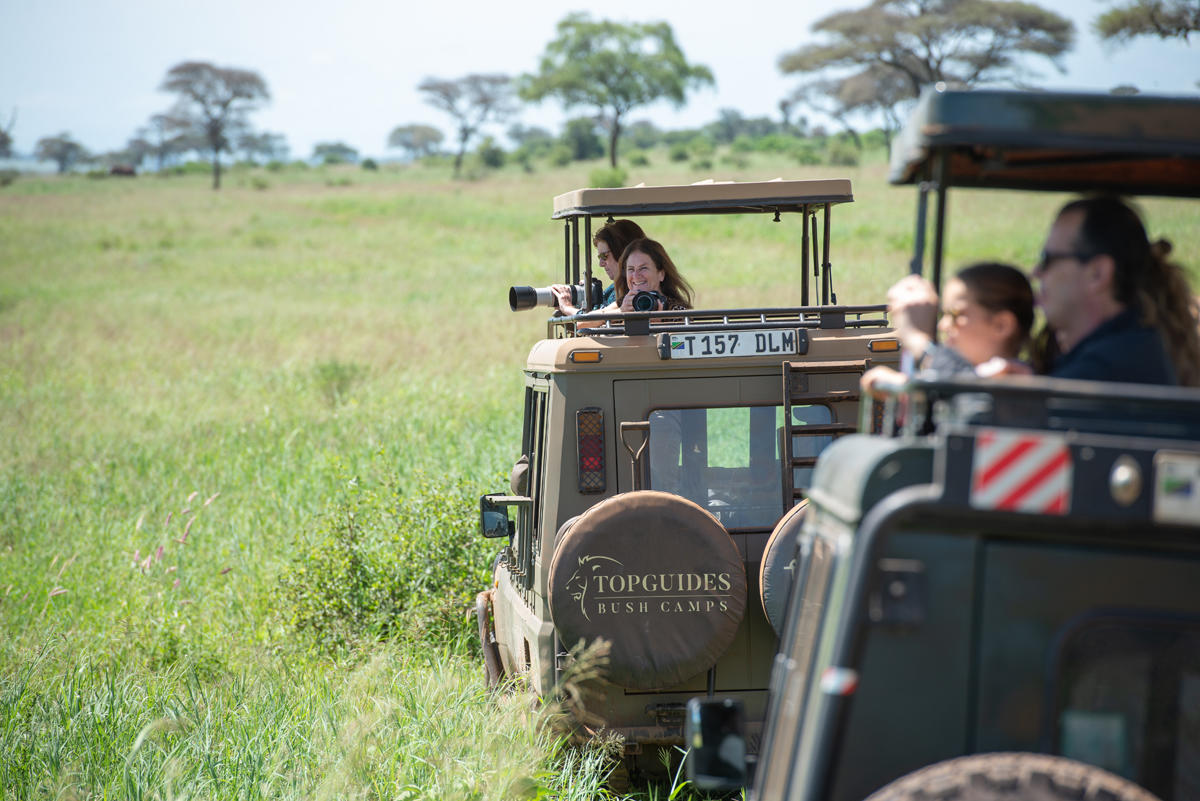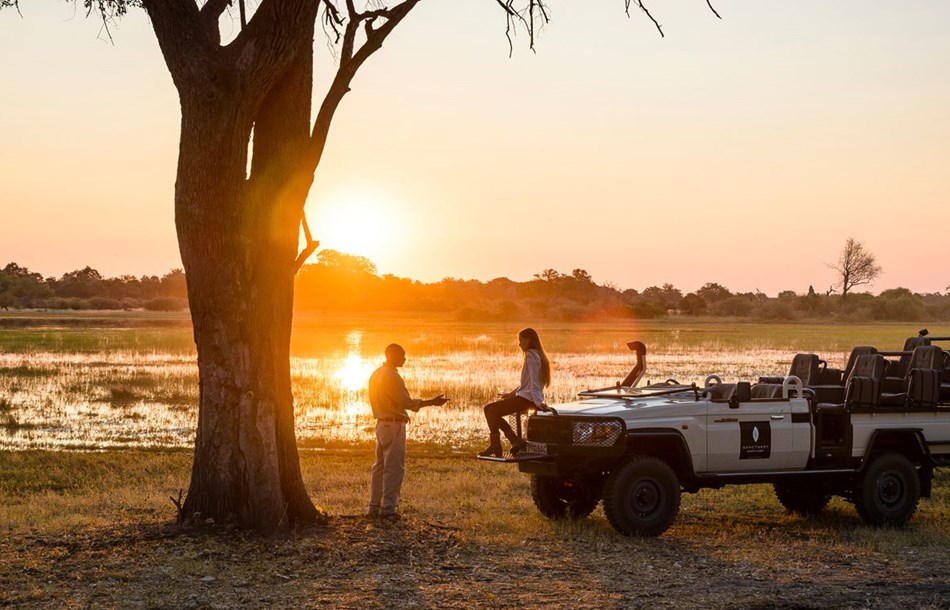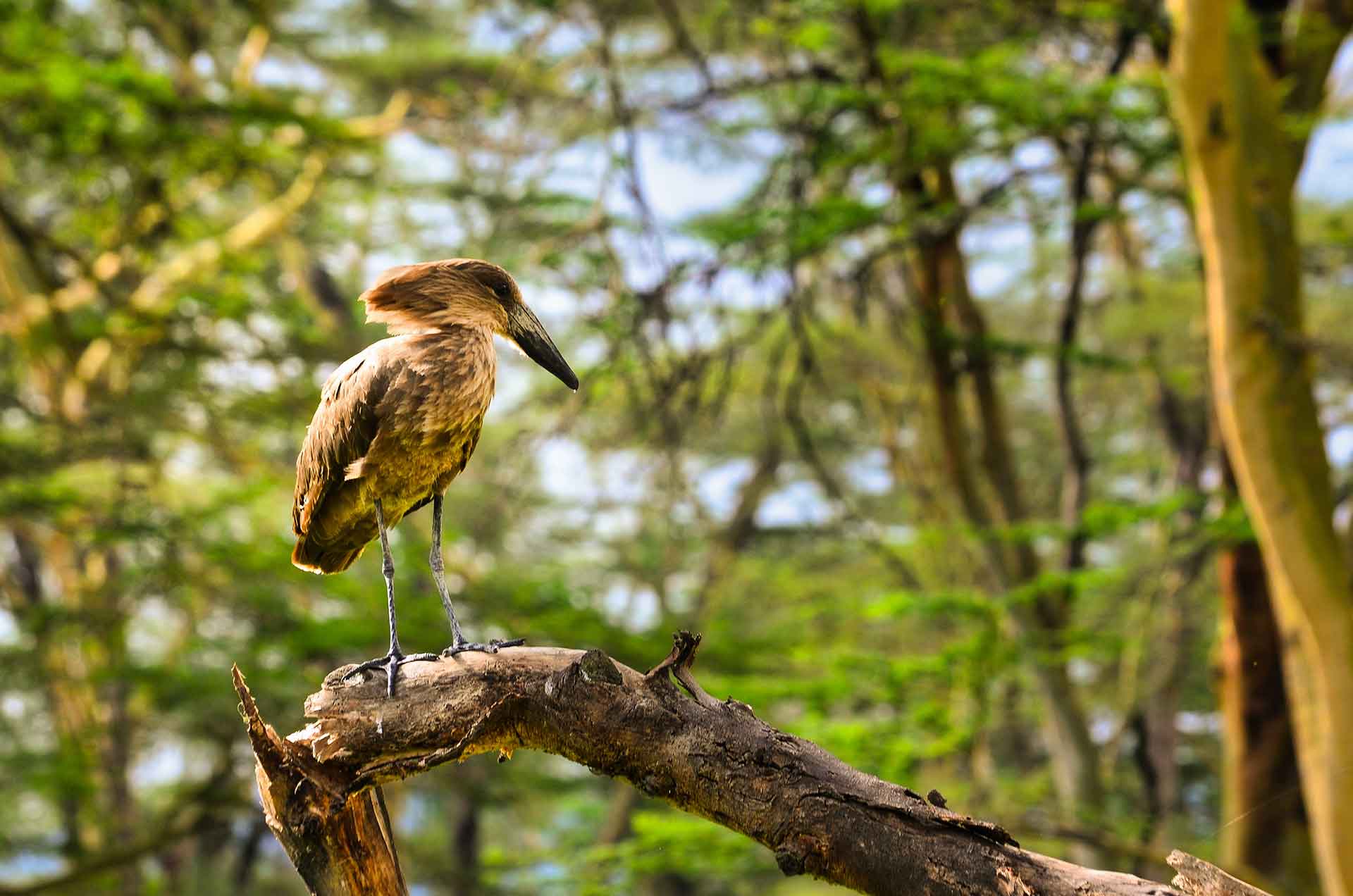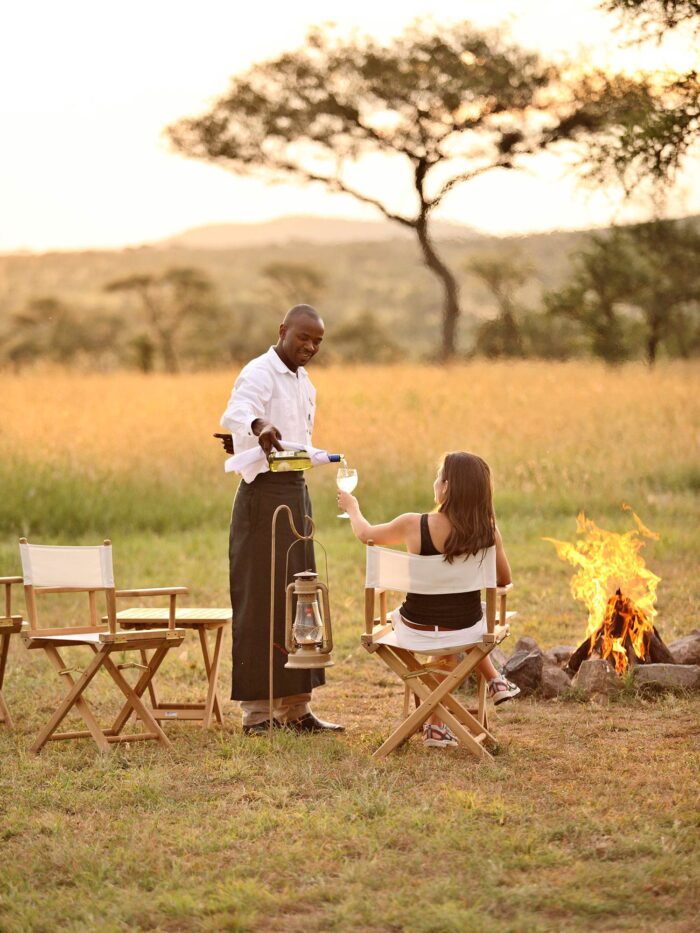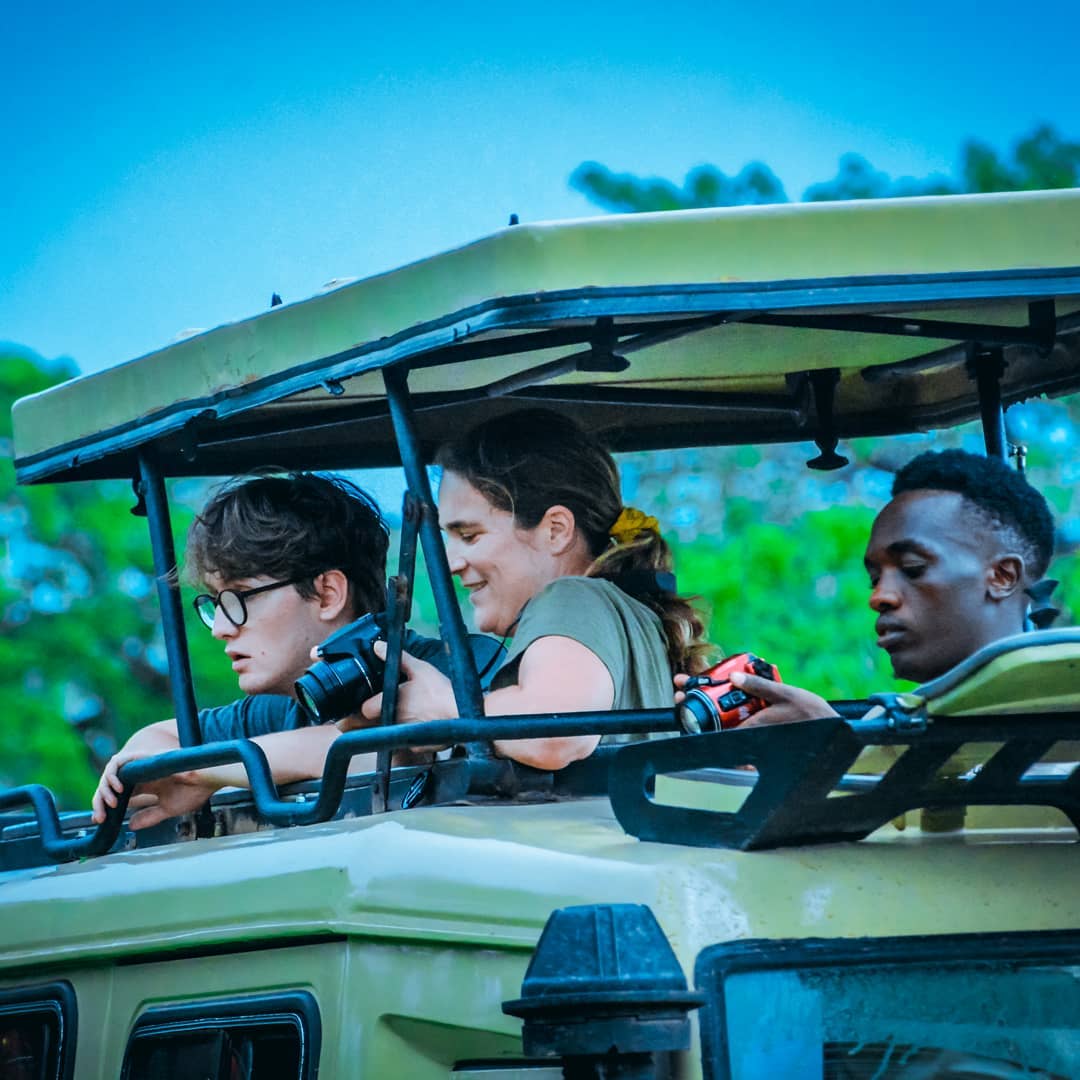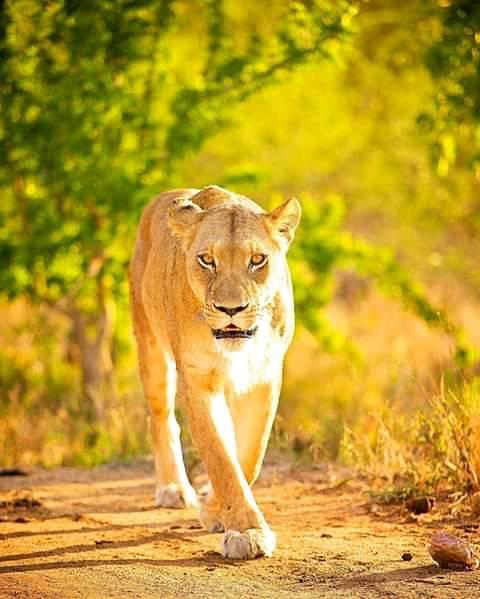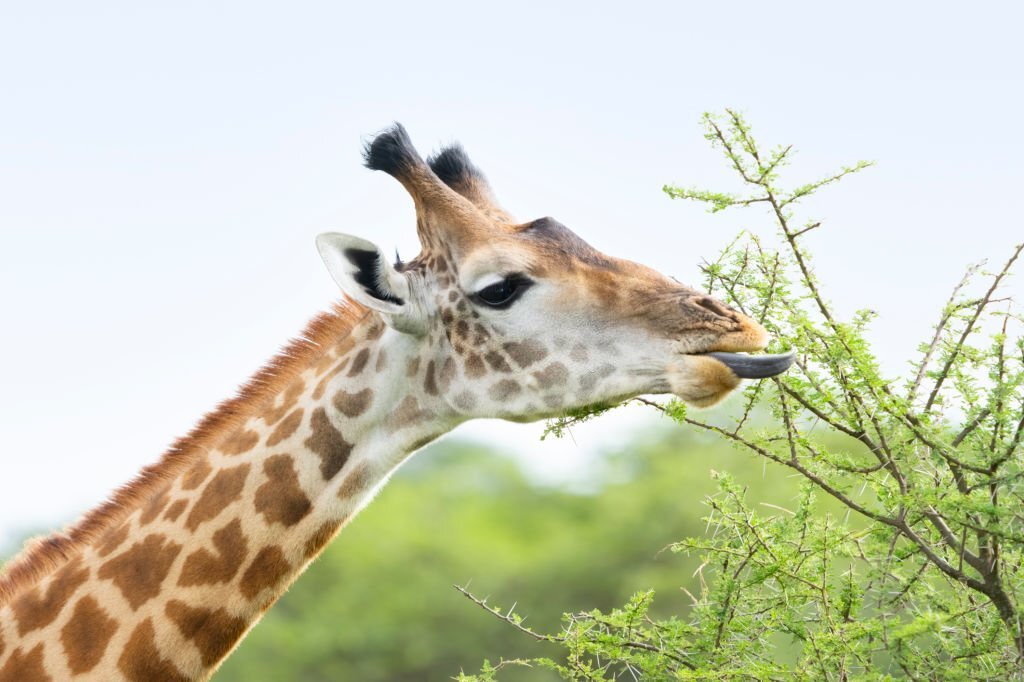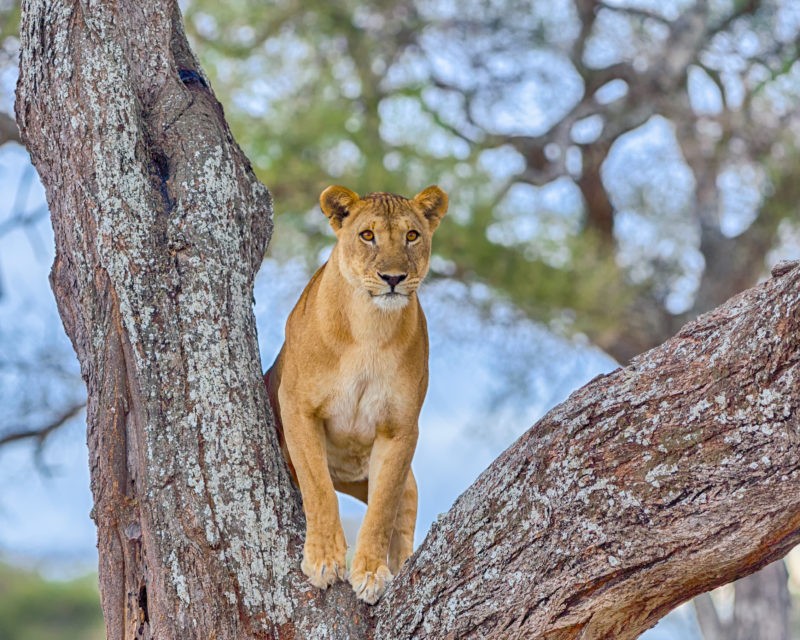
More Details About Ngorongoro
Get something new in Ngorongoro!
About Ngorongoro Crater Conservation Area
What's Ngorongoro?: The Maasai have given Ngorongoro Crater its name, meaning “the black hole”. The Ngorongoro Crater is often called the “Eden of Africa”. Ngorongoro is believed to be an onomatopoeic word termed by the Maasai people of the region to describe the sound of the bell that hangs around the neck of the lead cow in a herd. The bell makes an echoing "ngor ngor" sound, which made the local pastoralists name the area Ngorongoro. Ngorongoro Conservation Area is in northern Tanzania.
It’s home to the vast, volcanic Ngorongoro Crater and “big 5” game (elephant, lion, leopard, buffalo, rhino). Huge herds of wildebeests and zebras traverse its plains during their annual migration. Livestock belonging to the semi-nomadic Maasai tribe graze alongside wild animals. Hominin fossils found in the Olduvai Gorge date back millions of years.
Ngorongoro Crater Conservation Area is a UNESCO World Heritage Site located in northern Tanzania. Here is some information about this remarkable area:
Size and location: The Ngorongoro Crater Conservation Area covers an expansive area of about 8,292 square kilometers (3,202 square miles) and is situated in the eastern arm of the East African Rift Valley. It is part of the larger Serengeti ecosystem, bordering Serengeti National Park to the northwest.
Biodiversity: Ngorongoro Crater Conservation Area is renowned for its exceptional wildlife diversity. The crater floor, with its permanent water sources and lush grasslands, supports a high concentration of wildlife, including lions, elephants, rhinoceroses, buffaloes, and various ungulates such as wildebeest, zebras, and gazelles. The area is also home to over 500 bird species.
Conservation and Coexistence: The conservation area is unique as it is a multiple land-use area where wildlife, Maasai pastoralists, and their livestock coexist. It is one of the few places in Africa where such a harmonious balance between wildlife conservation and traditional human activities has been maintained.
Olduvai Gorge: The Olduvai Gorge, located within the conservation area, is an important archaeological site known for its fossil discoveries. It has yielded significant evidence of early human evolution, including ancient hominin remains and stone tools, providing insights into the history and origins of humanity.
Cultural Heritage: The Maasai people, known for their rich cultural heritage and traditional way of life, inhabit the Ngorongoro Conservation Area. Interacting with the Maasai offers visitors a unique opportunity to learn about their customs, traditions, and sustainable land use practices.
Ngorongoro Crater: The highlight of the conservation area is the Ngorongoro Crater, a large volcanic caldera with a diameter of approximately 19 kilometers (12 miles) and a depth of 610 meters (2,000 feet). It is one of the largest intact calderas in the world and is often referred to as the "eighth wonder of the world.".
Crater Floor Ecosystem: The crater floor, with its varied habitats of grassland, woodland, and swamps, supports a rich ecosystem. The permanent water sources in the crater, such as Lake Magadi, attract a wide array of wildlife, making it an ideal location for game drives and wildlife observation.
Ngorongoro Highlands: The Ngorongoro Conservation Area extends beyond the crater itself, encompassing the stunning Ngorongoro Highlands. This region is characterized by rolling hills, forests, and volcanic landscapes, offering picturesque vistas and opportunities for hiking, cultural encounters, and exploring Maasai villages.
What to do In Ngorongoro Crater Conservation Area
There are several exciting activities and experiences to enjoy in Ngorongoro Crater Conservation Area. Here are some things to do when visiting Ngorongoro:
Game Drives:
Game drives are the most popular activity in the conservation area. Explore the vast Ngorongoro Crater, which is often referred to as the "Lost World of Africa." Encounter an incredible diversity of wildlife, including lions, elephants, rhinoceroses, buffalo, zebras, wildebeest, gazelles, and more. The crater's unique ecosystem provides excellent game viewing opportunities.
Ol Doinyo Lengai Hike:
For more adventurous travelers, consider a hike up Ol Doinyo Lengai, an active volcano located in the nearby Rift Valley. The climb to the summit is challenging but rewarding, offering panoramic views of the surrounding landscapes. Please note that proper preparation and guidance from experienced guides are essential for this activity.
Ngorongoro Crater Rim Walk:
Embark on a guided walk along the rim of the Ngorongoro Crater. Enjoy breathtaking views of the crater floor, take in the stunning landscapes, and learn about the geological formations and the area's ecosystem. It's a chance to appreciate the beauty of the surroundings from a different perspective.
Relaxation:
While Serengeti National Park is primarily known for its wildlife and adventurous activities, there are opportunities for relaxation and rejuvenation as well. Here's how you can find moments of relaxation in Serengeti:
Luxury Lodges and Camps: Ngorongoro Crater Conservation Area offers a range of luxury lodges and camps that provide a serene and comfortable environment for relaxation. These accommodations often feature amenities such as spa facilities, swimming pools, lounges, and private verandas where you can unwind and enjoy the tranquility of the surroundings.
Nature Walks and Picnics: Take leisurely nature walks along the crater rim or in the highlands surrounding the conservation area. Enjoy the fresh air, breathtaking views, and the peaceful ambiance of the natural surroundings. Some lodges and tour operators can arrange picnics in scenic locations, allowing you to enjoy a delicious meal in the midst of nature.
Spa and Wellness: Some lodges and camps within the conservation area offer spa and wellness facilities where you can indulge in massages, body treatments, and relaxation therapies. Pamper yourself and rejuvenate your body and mind after a day of exploration and adventure.
Sunset Viewing: Watch the mesmerizing African sunset over the vast landscapes of the conservation area. Many lodges and camps provide scenic viewpoints or organize special sundowner experiences where you can relax, sip a refreshing drink, and witness the breathtaking colors of the setting sun.
Yoga and Meditation: Find inner peace and serenity in the stunning landscapes of the conservation area by practicing yoga or meditation. Many lodges offer yoga sessions or can arrange for private instructors to guide you through these mindful practices. Connect with nature, restore your energy, and achieve a sense of balance and tranquility.
Wildlife Observation: Sometimes, relaxation can be found simply by sitting back and observing the wildlife. Find a comfortable spot in a safari vehicle or at a vantage point and take in the sights and sounds of the Serengeti. Observe the animals in their natural habitat, from the graceful movements of giraffes to the playful interactions of elephants. It's a peaceful and meditative experience.
What
Birdwatching:
Ngorongoro Crater Conservation Area is a paradise for bird enthusiasts. With over 500 bird species, including flamingos, ostriches, crowned cranes, and various raptors, the area offers exceptional birdwatching opportunities. Spotting and identifying different bird species add another layer of enjoyment to your visit.
Maasai Village Visit:
Engage in a cultural experience by visiting a Maasai village within the conservation area. Learn about the traditional Maasai way of life, their customs, and their sustainable land use practices. Get insights into their traditional dances, crafts, and interact with the Maasai people, gaining a deeper understanding of their rich cultural heritage.
Picnics and Sundowners:
Many lodges and safari operators offer the opportunity to enjoy picnics or sundowners in scenic locations within the conservation area. Relax and savor a delicious meal or refreshing drink while surrounded by the beauty of the crater and its surroundings.
Empakaai Crater Trek:
Embark on a trek to Empakaai Crater, a smaller but equally stunning volcanic crater located in the conservation area. The trek offers breathtaking views, encounters with wildlife, and a chance to see flamingos that inhabit the crater's lake. It's a rewarding and less crowded alternative to the main Ngorongoro Crater.
Archaeological Sites:
Visit the Olduvai Gorge Museum and explore the archaeological sites within the conservation area. Learn about the discoveries of early human fossils and artifacts, and gain insights into the area's significant contributions to our understanding of human evolution.
Stargazing:
Ngorongoro Crater Conservation Area's remote location and limited light pollution offer excellent conditions for stargazing. Spend a night under the starry African sky and marvel at the constellations and celestial beauty abov.
Photography Workshops:
Join photography workshops led by experienced wildlife photographers who can guide you on capturing the stunning landscapes and wildlife of the conservation area. Learn techniques to enhance your photography skills and create memorable images.
Bush Breakfast and Bush Dinner:
Experience the thrill of dining in the wild with bush breakfasts and bush dinners. Enjoy a delicious meal surrounded by nature, often set up in scenic locations within the park. It's an unforgettable way to immerse yourself in the Serengeti's atmosphere.
Remember to plan your activities in advance, considering factors such as the weather, park regulations, and the availability of experienced guides. Each lodge or camp in Serengeti typically offers a variety of activities, ensuring a memorable and fulfilling experience in this remarkable national park.
Interesting facts In Ngorongoro Crater Conservation Area
UNESCO World Heritage Site:
Ngorongoro Crater Conservation Area is recognized as a UNESCO World Heritage Site for its outstanding natural and cultural value. It is considered one of the most unique and important conservation areas in Africa.
Volcanic Caldera:
The Ngorongoro Crater is actually a large volcanic caldera, formed by the collapse of a volcano millions of years ago. It is one of the largest intact calderas in the world, with a diameter of about 19 kilometers (12 miles) and a depth of 610 meters (2,000 feet).
Dense Wildlife Population:
The conservation area is home to an incredible concentration of wildlife. It hosts over 25,000 large mammals, including lions, elephants, rhinoceroses, buffaloes, zebras, wildebeest, and various antelope species. The high density of wildlife makes Ngorongoro Crater an excellent destination for game viewing.
Conservation Success:
Ngorongoro Crater Conservation Area is a prime example of successful wildlife conservation and the coexistence of humans and wildlife. It demonstrates how sustainable land use practices, such as those employed by the Maasai communities, can contribute to preserving biodiversity.
Endangered Black Rhinos:
The conservation area is home to a population of critically endangered black rhinoceros. Efforts are underway to protect and conserve these magnificent creatures, and the area serves as an important sanctuary for their survival.
Paleontological Significance:
The Olduvai Gorge, located within the conservation area, is a significant paleontological site. Numerous fossils and artifacts have been discovered here, providing crucial insights into early human evolution. It is often referred to as the "Cradle of Mankind.
Birdwatcher's Paradise:
Ngorongoro Crater Conservation Area boasts a diverse bird population, with over 500 bird species recorded. From flamingos on Lake Magadi to raptors soaring overhead, birdwatchers have ample opportunities to spot and admire various avian speciesg.
Ecosystem Variety:
The conservation area encompasses a range of ecosystems, including grasslands, forests, and swamps. This diversity of habitats supports a rich array of flora and fauna, contributing to the area's remarkable biodiversity.
What
The Big Five:
Ngorongoro Crater Conservation Area is known as one of the best places in Africa to spot the Big Five. The Big Five refers to the five iconic and sought-after large mammal species: lion, leopard, elephant, rhinoceros, and buffalo. The conservation area is home to all these species, making it an excellent destination for wildlife enthusiasts hoping to see these majestic animals in their natural habitat.
Limited Human Settlement:
Although the Maasai communities reside in the conservation area, permanent human settlement within the crater is restricted. This measure helps to preserve the natural habitat and prevent excessive human interference.
Film Location:
The Ngorongoro Crater Conservation Area has served as a filming location for several documentaries and movies, including iconic wildlife documentaries and popular feature films.
Fossil Discoveries:
The conservation area has yielded significant fossil discoveries, including early hominin remains and ancient animal fossils. These discoveries have played a crucial role in advancing our understanding of human evolution and the prehistoric ecosystems that once thrived in the region.
Animal Coexistence:
Ngorongoro Crater Conservation Area is one of the few places in Africa where humans and wildlife coexist harmoniously. The Maasai people, who have inhabited the area for centuries, live alongside the wildlife, practicing sustainable land use and traditional pastoralism.
Crater Floor Microclimates:
The Ngorongoro Crater's unique topography creates microclimates within its walls. The crater's floor experiences different climatic conditions compared to the surrounding areas, resulting in variations in vegetation and wildlife distribution.
Climate & Seasons In Ngorongoro Crater
What's the best time to visit Ngorongoro
Dry Season (June to October): The dry season is generally considered the best time to visit Ngorongoro Crater Conservation Area. During this period, the weather is usually dry, and wildlife congregates around water sources, making it easier to spot animals. The clear skies also offer excellent visibility for photography and scenic views. However, keep in mind that this is the high season, and the area can be more crowded.
Wet Season (November to May): The wet season brings lush greenery and migratory bird species to the conservation area. The scenery is beautiful, and the fewer crowds can offer a more exclusive experience. However, some roads can be muddy and impassable, and wildlife can disperse across a larger area due to the abundance of water sources.
Calving Season (January to February): If witnessing the wildebeest calving season is a priority, then visiting in January to February is recommended. The southern Serengeti plains within the conservation area become a spectacle of newborn wildebeest calves, attracting predators and offering incredible wildlife interactions.
Birdwatching (November to May): Birdwatching enthusiasts may prefer the wet season (November to May) when migratory bird species arrive in the area. The abundance of water sources and vegetation provides an ideal habitat for a variety of bird species.
Cultural Events (Anytime): If you are interested in experiencing cultural events or festivals of the Maasai people, it's advisable to plan your visit around specific dates when ceremonies or gatherings take place. Consult with local guides or tour operators for more information on cultural events.
So, Ultimately, the best time to visit Ruaha National Park depends on your specific interests. If you prioritize excellent game viewing and the chance to spot large concentrations of wildlife, the dry season is recommended.
January and February:
These months are part of the wet season, so you can anticipate a higher chance of rainfall. Ngorongoro Crater receives moderate to heavy rainfall during this period, with February typically having more precipitation than January. Rainfall can vary, but it is not uncommon to experience afternoon showers or occasional continuous rain throughout the day.
What
March to May:
The wettest period of the year. It rains on most days, but not all day. During the day it is on average 21 degrees in the crater and 6 degrees on the crater rim. The temperature can be lower due to cold fronts.
June to October:
The afternoon temperatures are usually around 19 degrees inside the crater. Sunny, cloudless skies are usual. It gets cold at night and it potentially freezes on the edge of the crater.
November and December:
he afternoon temperatures are around 23 degrees in the crater and 6 degrees at night on the crater rim.This is a period in which a showers can take place in the afternoon for a month. That will not be very disturbing.
So, the exactly best time to visit Ngorongoro Crater Conservation Area is from July to October due to the follow reasons or factors:
>> Wildlife Viewing: The dry season offers the best wildlife viewing opportunities in the conservation area. As the vegetation becomes sparse, animals are easier to spot, and they tend to gather around water sources, making wildlife sightings more frequent and concentrated.
>> Great Migration: Although the Ngorongoro Crater Conservation Area is not directly on the path of the Great Migration, it is adjacent to the Serengeti, where the migration takes place. From June to October, the wildebeest herds are usually in the northern Serengeti, close to the conservation area, presenting an opportunity for witnessing river crossings and exciting predator-prey interactions.
→ However, it's important to note that Ngorongoro Crater Conservation Area is a year-round destination, and each season offers its own unique experiences. Ultimately, the "best" time to visit depends on your preferences and priorities. Consider what experiences you seek, whether it's optimal wildlife viewing, birdwatching, or witnessing specific natural events, and plan your visit accordingly
Pictures
Ngorongoro Pictures
Activities
What travellers most enjoyed
on this destination.
Guided Walking Safari
Wildlife And Safari
Bird Watching
Bush Meals
Boat Safari
Scenery
Bush Camping
Accommodations
Accommodations Found
Inisde Park
Packages
Our Perfect Packages
Adventure, Family, Holidays, Wildlife.
Adventure, Family, Holidays, Wildlife.
Adventure, Family, Holidays, Wildlife.
Adventure, Family, Holidays, Wildlife.
Adventure, Family, Holidays, Wildlife.
Adventure, Family, Holidays, Wildlife.
Adventure, Family, Holidays, Wildlife.
